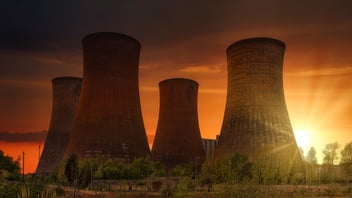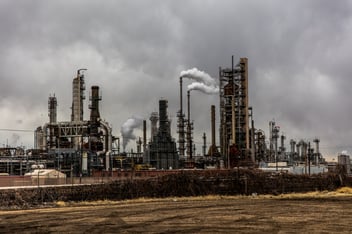Separating Facts from Fiction: Misinformation around Air Pollution
Air pollution has become a major global concern in recent years, affecting the health and well-being of millions of people. However, despite increased public awareness about air pollution, there are still many myths and misconceptions about this important issue. Currently, the world is facing an abundance of information which also widens the scope for misinformation, misinterpretation, and confusion as to what to believe and what not to. It becomes all the more crucial to filter the narrative into information and misinformation. Following are the common myths and misinformation about air pollution for you to distinguish from and know the air we breathe:
1. Only long-term exposure to air pollution is harmful.
Research has found that both short-term and long-term exposure to air pollution can lead to a range of health problems. Chronic exposure to air pollution can have long-term health effects, including increased risk of respiratory and cardiovascular diseases, stroke, and cancer. Whereas short-term exposure to air pollution can lead to more severe impacts affecting people who are already ill. Children, the elderly, and poor people are more susceptible to even short-term exposure.
2. Air pollution is only a problem in developing countries.
This is a common misconception that air pollution is only a problem in developing countries, but the reality is that air pollution affects both developed and developing countries. In fact, some of the world's most developed cities, such as London and Los Angeles, are plagued by air pollution. Rural areas can also be affected by air pollution, particularly from sources such as agriculture and power plants. In addition, wind can carry pollutants from urban areas into rural areas, exposing residents to harmful pollutants.
3. Only outdoor air pollution is harmful.
Both outdoor and indoor air pollution can be harmful to human health, with indoor air pollution often being more concentrated due to poor ventilation. In addition, we spend the majority of our time indoors, making indoor air pollution a major concern. Common sources of indoor air pollution include tobacco smoke, household cleaning products, and building materials.
4. Air pollution can be easily seen.
Some forms of air pollution, such as smog and haze, are visible, but other forms of air pollution, such as ozone and nitrogen dioxide, are not visible. Soot, smoke, and smog have severe health impacts, and so do invisible pollutants like nitrogen and sulfur oxides, volatile organic compounds, carbon monoxide, and ozone. Sometimes, invisible pollution has more impact than visible pollution as we ignore to take precautions against them. The impacts of these invisible pollutants can range from respiratory problems to premature death. This makes it difficult for individuals to assess their exposure to air pollution and highlights the importance of monitoring air quality and using air purifiers to protect indoor air quality.
5. Automobiles are not a major source of air pollution.
Cars and other vehicles are a major source of air pollution, emitting harmful pollutants such as nitrogen oxides, particulate matter, and volatile organic compounds. In fact, transportation is the largest contributor to air pollution in many countries, and it is essential that we take action to reduce emissions from this sector.
6. Electric vehicles do not pollute.
According to Vishnu Sharma A, an environmental engineer and Assistant Professor at the Manipal Institute of Technology, the impact on the environment from charging your electric vehicle varies based on the source of energy. If you have a highly efficient rooftop solar park and charge your car using solar power, it can greatly reduce pollution. However, if the charging station relies on electricity from a thermal power plant that burns fossil fuels, the reduction in pollution may not be as significant.
7. Wearing a mask can protect you from all types of air pollution.
While wearing a mask can help protect against certain pollutants but it cannot protect against all air pollutants, including gases such as ozone and nitrogen dioxide. The best way to protect yourself from air pollution is to limit your exposure by staying indoors on high-pollution days, using air purifiers, and avoiding high-traffic areas.
Conclusion:
Air pollution is a complex and widespread problem that affects people all over the world. Effective communication of information about air pollution is crucial in order to raise awareness, inform decision-making, and promote action. This information can include data on air quality levels, sources of pollution, health impacts, and strategies for mitigation and prevention. By disseminating accurate and accessible information, individuals and communities can make informed choices and take effective steps to reduce their exposure to air pollution. Additionally, effective communication can help to build public support for measures to address air pollution and encourage policymakers to prioritize the issue.
References:
https://weather.com/en-IN/india/pollution/news/2019-10-18-7-myths-air-pollution-debunked-delhi-deaths-exaggeration
https://www.orfonline.org/research/indias-air-pollution-challenge/

.svg)
.webp?width=1080&height=1080&name=Free%20Case%20Study%20Steel%20Plant%20(1).webp)







Post Comments